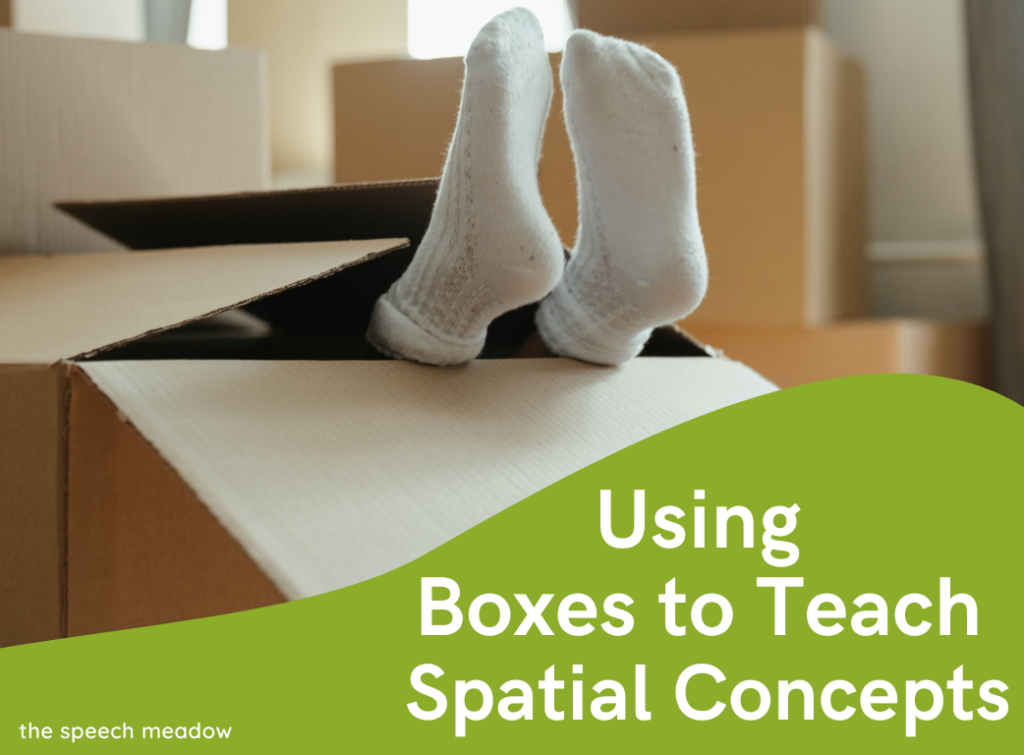In my family it’s common to hear, “One of the best toys to give children is a box.” Some of my favourite memories as a child revolved around playing with large boxes (we moved a lot!) At school I also try to incorporate boxes into play. Nowadays, it’s a little less cardboard boxes and a little more plastic containers. I have found that boxes are a great way to teach children about spatial concepts and work on play skills at the same time. They are also portable so you can work in the therapy room, classroom, in the gym or outside.

Why Use Boxes?
Children need to experience prepositions with their whole body not just with their hands or eyes. That’s why children with limited mobility or sight can sometimes have more difficulty learning this important vocabulary. Boxes are perfect for teaching early developing prepositions.
It always amazes me the number of children I see that lack basic play skills. It’s not just the children who are diagnosed with Autism. It’s also the children with speech and/or language delays and even typically developing children. Boxes are a great toy to expand play. They can be almost anything, a boat, car, house etc… One time is was a whale’s stomach from one of my favourite books, I’m the Biggest Thing in the Ocean.
Spatial Concepts You Can Teach
Boxes are a great way to teach spatial concepts. They are very open-ended. You can target:
- in
- out
- on
- off
- under
- next to/beside
- close to
- far from
- around
- by
Ideas on How to Play
Sometimes children’s exploration of boxes is organic and then an adult or other children will join in. Often it will start with an adult leading the activity. One week it was a T-Rex coming and the children needed to be safe so they got “in the box(es).” The children gleefully hopped in the boxes. Some of the children with mobility difficulties needed help (and were secretly working on their physio goals). For children in wheelchairs, big appliance boxes work well. Once the T-Rex got closer, everyone needed to get “out of the box.” Sometimes the T-Rex moved so fast that they had to “get under the box.” Sometimes the T-Rex would walk around the box or move near or far. By the end of the week, many of the children were taking turns being the T-Rex and we often heard the children shouting, “Get in!” or “Out!” or “Under!” followed by giggles and squeals. It made my speech heart smile to hear such wonderful language and the expansion of play skills.
For more ideas on how to target prepositions, click here to get a free handout. Do you use boxes in therapy? Let me know how you use them.

One Comment